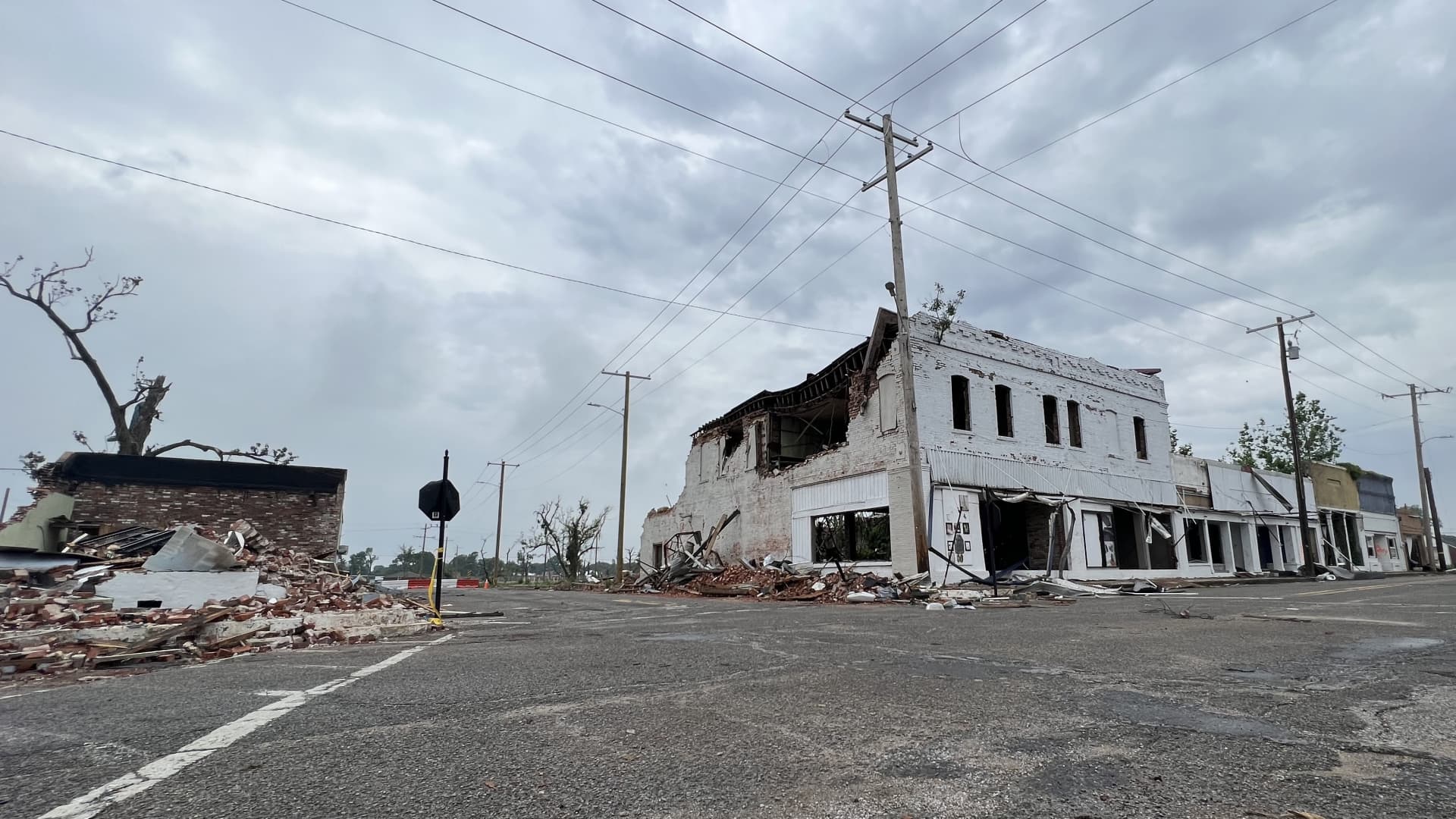The threat of tornadoes is rising as the weather conditions that create them are becoming more frequent and widespread due to global warming, experts say. That means a lot of areas that rarely see these storms are now in their paths.
The U.S. experienced six times more billion-dollar severe storms in the past decade than in the previous two decades, according to Climate Central. Those are the storms that produce tornadoes. So far this year, tornadoes have taken at least 58 lives across ten states, already surpassing the annual average. Much of that is because the season is starting earlier and tornado alley is expanding thanks to a warmer climate.
“Northeast Texas, eastern Oklahoma, the Arkansas River Valley, the mid-South, these areas are expected to see a near doubling of storms that produce tornadoes,” said Walker Scott Ashley, professor of meteorology at Northern Illinois University.
Tornadoes need four ingredients to form, explained Ashley: Moisture, instability (which provides the energy necessary for the storms), wind shear, and lift. The first two are expected to increase significantly in a warming climate.
”It makes a lot of sense. If we heat up the oceans, if we heat up the earth’s atmospheric system, we’re going to have more moisture in that system, and that leads to more moisture for the storms, but also greater instability,” Ashley said.
When a powerful F-4 tornado plowed through Rolling Fork, Mississippi, in March, residents were largely unprepared. The area had not seen a tornado in over half a century.
“We didn’t have very many tornadoes. The only one that I can remember is 1971, and the tornado bypassed Rolling Fork. It didn’t actually hit,” said Eldridge Walker, the mayor and a native of Rolling Fork, which has a population of just under 1,800 people.
When the March storm hit, the city had only one tornado siren, and some residents said they didn’t hear it. There are now plans to add two more.
“It’s pretty clear that things are happening, which means as a city, as a community as a homeowner, that folk need to be serious, a little bit more serious minded about being prepared,” Walker said.
The difference between tornados coming through typical tornado alley, like Kansas, and coming through Mississippi is simple density. The states have almost the same exact populations, but Mississippi is roughly half the size of Kansas.
“There are more things, more people, more of us and more of our possessions in the Mid-South,” said Ashely. “You combine that with an extreme socio-economic vulnerability, and that is increased poverty rates and lack of sheltering and poor, in many cases, substandard housing — the recipe is for disaster across some of these areas.”
The majority of residents in Rolling Fork had neither homeowner’s nor renter’s insurance, according to Walker.
That’s precisely why the widening of tornado alley is fast becoming a new focus for insurers.
”If we continue on the trend that we’re going, that means that these economic losses are going to become in the hundreds of billions of dollars in a calendar quarter,” said John Dickson, president of insurer Aon Edge, a division of Aon. “We need to make sure that we have an infrastructure, we have a capital mechanism, that we have a connected community mechanism to be able to respond to these events.”
But it’s all happening, Dickson said, at a time when insurance dollars are diminishing.
“So insurance capital becomes a precious finite commodity, prices go up, coverage changes, coverage options begin to be tighter, and deductibles go up,” he added.
Global reinsurer capital declined by 17%, or $115 billion, to $560 billion during the first nine months of 2022, according to Eric Andersen, president of Aon, in March 2023 testimony before the U.S. Senate Committee on Budget. As a result, reinsurers are raising prices, limiting coverage, and even exiting some markets to improve returns.
Both State Farm and Allstate have stopped writing homeowner’s insurance in California due to the rising risk of wildfires. In a May release, State Farm said it made the decision “due to historic increases in construction costs outpacing inflation, rapidly growing catastrophe exposure and a challenging reinsurance market.”
